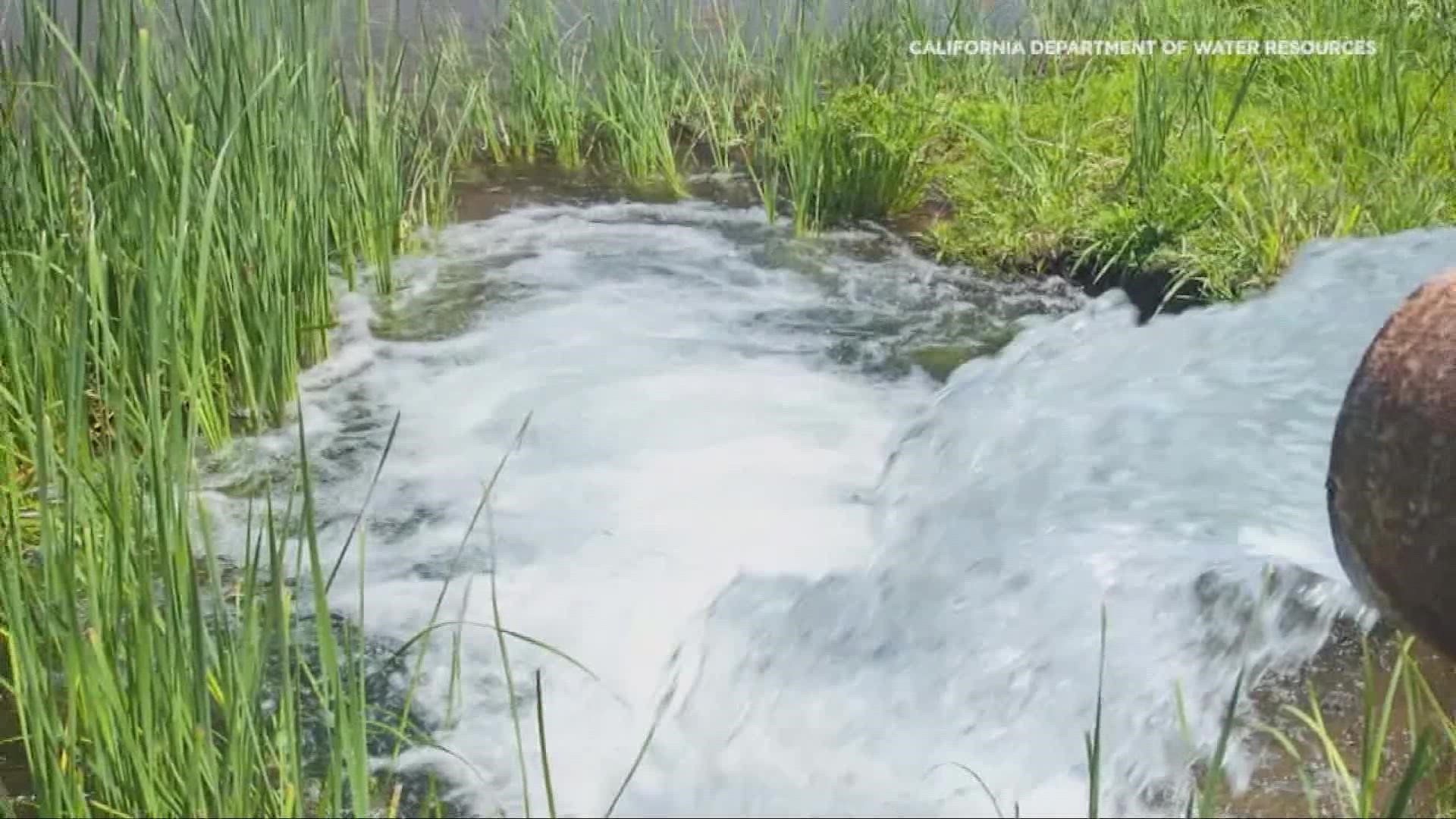SACRAMENTO, Calif — A project spanning three years and 16,000 miles is showing just how much storage potential is beneath the surface in California.
The state released new information as it approached the 10th anniversary of California’s Sustainable Groundwater Management Act, legislation passed in 2014 to help protect the state's groundwater in the long term.
Groundwater is a natural pre-built, underground system that has the potential to store up to 1.3 billion acre feet of water. It's a huge increase from the roughly 40 million acre feet of storage from above ground reservoirs.
Steven Springhorn, a supervising engineering geologist at the California Department of Water Resources, said in an average year about 40% of California's water supply comes from groundwater. That number goes up to 60% during dry years. Keeping this water refilled has been a challenge because different materials require different methods of recharge.
Thanks to state of the art technology through a program called the Airborne Electromagnetic Surveys, the state now has a clearer picture of what is underground. About 95 groundwater basins were scanned to map out what was beneath the surface to a depth of 1,000 feet. It was similar to taking an MRI of the surface.
Springhorn said the California Department of Water Resources is providing this information free on their website to create a more equitable distribution of the data. This information can help local communities, community-based organizations, local water managers and public officials work together to understand what they are being asked to manage.
For more Weather coverage, stream ABC10+ on your TV for free:
► Roku - click here
► Amazon Fire - click here
► Apple TV - click here
Some materials may allow slow percolation of water into the subsurface, whereas others may require a more active recharge system.
Springhorn said this new information is just the beginning as many groundwater sustainability agencies begin diving into the new dataset.
Some are finding superhighways of water recharge from ancient river beds. Others are finding materials may be more challenging to push water underground. All of this helps in funding and program management to make the best use of existing opportunities.
The new data will also be used to refine numbers on how much storage potential there is underground. This will be a part of the next release of California's groundwater bulletin 118 which will be coming out at the end of 2025.
WATCH ALSO:

















